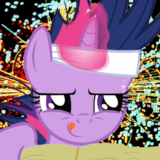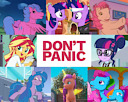Blue Moons and Lunar Eclipses · 7:56pm Aug 2nd, 2018
New story out today—yes I can still write stories! Please take a look at Once in a Rainbow Moon, written following last week’s lunar eclipse. Here are the notes on the science in this one.
“What is a Blue Moon?” is a science question with a long history. I once meet an astronomy professor who told a story of how after he first gave a talk to a primary school class, the first question he got from a young child was “what is a blue moon?” and he had to admit that he hadn’t a clue.
That was many years ago. I think there were quite a few astronomers at that time who would have also struggled to answer to that question. The trouble is that telling people that it’s just an expression meaning something very rare, and doesn’t really mean anything, is not the answer they want to hear. A Blue Moon really should be something cool and astronomical.
However, once internet searches became possible, the situation changed. Once one blogger found a satisfactory answer, everyone else could copy it. So we now have a widely accepted response that a blue moon is the second full moon in a calendar month. This is particularly useful to anyone running an astronomy news feed as it provides a regular opportunity to release There’s Going To Be A Blue Moon! posts. And then we have rival groups of amateur folklorists who can post an alternative calendar using the Maine Farmers' Almanac definition, and have hours of fun arguing with each other in the blog comments.
If you want to read more about this bit of modern folklore, see Once in a Blue Moon (Sky and Telescope)
The more interesting question for an atmospheric physicist is whether there are any weather phenomena which can make the moon appear blue. The answer is yes, but it doesn’t happen very often, and it’s hard to predict when it will.
A quick bit of revision of atmospheric scattering:
- Clouds are white as they are made of large water droplets which scatter all the colours in the white light from the sun equally.
- The sky is blue as air molecules scatter more blue light than other colours
- Sunsets are red as we are looking at the unscattered light after the blue light has been scattered during its passage through the low sky.
To get a blue moon (or sun for that matter) you would need to look at it through something that scatters or absorbs an excess of red and thus turn white moonbeams blue. That’s a bit more difficult to arrange as most colour-dependent scattering process work the other way round scattering more of the shorter blue wavelengths. But if you have airborne particles of the right size it can happen, perhaps from forest fires, volcano eruptions (or a snoring dragon), or something else. There have been reports of blue moons seen in snowy conditions.
This article gives a detailed explanation of these processes: Twice in a Blue Moon (Weatherwise)
Lunar eclipses are a much more clearly defined thing. When the Earth comes directly between the sun and moon, the moon falls in its shadow, but it is still illuminated by the light scattered in the Earth’s atmosphere, as red as the sunset. And thanks to the millimetre-thick ozone layer, other bands of colours are also visible, as explained here: Colorful Lunar Eclipse (NASA).






¡ ! ¡I shall read!
! ¡I shall read!
Can Luna pull the moon closer and make a rainbow moon?